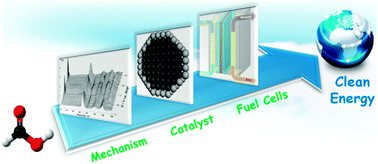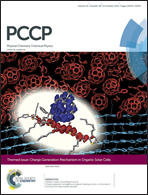Electrocatalysis of formic acid on palladium and platinum surfaces: from fundamental mechanisms to fuel cell applications
Abstract
Formic acid as a natural biomass and a CO2 reduction product has attracted considerable interest in renewable energy exploitation, serving as both a promising candidate for chemical hydrogen storage material and a direct fuel for low temperature liquid fed fuel cells. In addition to its chemical dehydrogenation, formic acid oxidation (FAO) is a model reaction in the study of electrocatalysis of C1 molecules and the anode reaction in direct formic acid fuel cells (DFAFCs). Thanks to a deeper mechanistic understanding of FAO on Pt and Pd surfaces brought about by recent advances in the fundamental investigations, the “synthesis-by-design” concept has become a mainstream idea to attain high-performance Pt- and Pd-based nanocatalysts. As a result, a large number of efficient nanocatalysts have been obtained through different synthesis strategies by tailoring geometric and electronic structures of the two primary catalytic metals. In this paper, we provide a brief overview of recent progress in the mechanistic studies of FAO, the synthesis of novel Pd- and Pt-based nanocatalysts as well as their practical applications in DFAFCs with a focus on discussing studies significantly contributing to these areas in the past five years.


 Please wait while we load your content...
Please wait while we load your content...